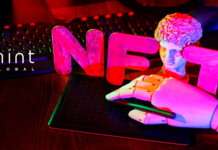
Cryptocurrency enthusiasts love to fantasize about the day when their favorite coin finally goes mainstream. But the reality is that there’s a huge wall between the crypto enthusiast community and the rest of the world, and that wall is user experience.
If you’re working at a blockchain starting, creating a strong user experience at every step of the process can help ensure that you stand out from the pack. So let’s take a look at what should be a simple process – choosing, buying, and storing a cryptocurrency – and see how existing solutions are failing, and what you might do better.
We’ll follow our hypothetical buddy, Frank, who’s just started to learn about the blockchain and is interested in investing.
Choosing a Coin
Frank’s first step will be picking which coin he wants to invest in, and right away, he’s going to encounter some awful user experiences. Outside of the most popular coins, on any token site he visits, he’s likely to encounter a front page full of tech jargon and incomprehensible flowcharts. If he wants to learn more, he’ll be directed to the whitepaper, which is often a highly technical, 20+ page PDF.
I can’t think of any other industry that uses complex, lengthy PDF files as one of its first touchpoints for onboarding new users.
It’s important to have that information available, of course. But if you want your token to go mainstream, you need to be worried about other things first. What can this token do for the user? You should have an answer to that question front-and-center on your homepage, and it needs to be free of tech jargon. You don’t need to explain how it works here, just what it does. If your Mom doesn’t understand it, try reworking and simplifying until she does.
Short “explainer” videos are a great way to present the basics of your token in a fast and visually-compelling way, but if you can’t afford that, a well-written paragraph and some attractive design will do in a pinch. The key is that when Frank loads your site, he should be able to see almost immediately what your token can do for him.
Acquiring a Coin
Let’s say Frank has chosen your coin. Great! Now what?
Well, unless you’re one of Coinbase coins, the process of acquiring your coin is probably going to entail Frank setting up a Coinbase account, buying some Bitcoin, setting up an account on some other exchange, learning how to send the Bitcoin to that exchange, sending the Bitcoin to that exchange, waiting for the Bitcoin transaction to complete, learning how to use the exchange, and purchasing some of your coin by spending his Bitcoin on the exchange.
That’s an awfully complex and long user experience. Can you imagine if buying something on Amazon was that complicated and time-consuming?
Of course, a lot of that process is out of your control, since you may not be able to get your coin onto Coinbase for easy access. But you can still simplify the purchase process as much as possible. At a bare minimum, you should have clear, concise video walkthroughs that are easily accessible on your site (and Youtube) showing users how to make a purchase step-by-step.
And if at all possible, you should try to build your own much simpler way of acquiring or earning your token.

Storing a Coin
Now that Frank’s bought your token, he’s got to put it somewhere. He could leave it on the exchange, of course, but that’s not a great idea. Ideally, he needs to store it in a wallet of the digital, hardware, or cold-storage variety.
But typically, all of those experiences are difficult, too. Official wallet apps are often poorly-designed or buggy (or both). Third-party apps, particularly the popular ones, are vulnerable to spoofing and other kinds of malicious attack. Hardware wallets are expensive and still somewhat complex, and cold storage wallets are secure but also an easy way for users to accidentally lose their coins.
So what can a good blockchain company do to combat these problems? First and foremost, develop a solid wallet app with a strong, simple, clear user experience. Video walkthroughs of how to use other storage solutions are probably also a good idea.
Spending a Coin
Once Frank’s got your token safely stored in his wallet, he’s going to be looking for some way to use it (if crypto’s going to go mainstream, we can’t just “HODL” every coin forever).
Obviously, how he can use your token depends on the specifics of your project, but the goal for any blockchain project should be to make using the token easy and convenient. Yet many projects, even high profile ones, fail at this.
For example, I’ll pick on NANO, which is (as of this writing) a top 50 coin. It’s aimed at offering fast, easy, and free payment transactions. But if Frank were to visit Nano’s official site, he wouldn’t find any information about where he could spend his tokens. For that information, he’d have to Google for third-party sources that might be unreliable or outdated.
A better approach: putting an up-to-date, reliable list of partner merchants right on Nano’s site, where Frank can easily find and make use of it.
Whatever your blockchain project does, you should take that kind of approach. If you want to go mainstream, you can’t just attract an army of hobbyist hodlers, you need people actually using your token for its intended purpose.You should do whatever you can to make that as easy as possible.
Final Thoughts
The bottom line is that at every step of the process, you want to make things as easy, quick, and enjoyable as possible for your users. How can you do that? Here are a few takeaways almost any blockchain firm can make use of:
- Simplify, simplify, simplify. You want a description (or video) on your front page that’s so clear, simple, and quick that even your mom can understand what your token does and why she might want it inside of 30 seconds.
- Test with real users. Not members of your team, not your tech or crypto-loving friends, regular people. Listen carefully to what they tell you.
- Use video. Getting a good video made is costly, but if a picture’s worth a thousand words, and the moving pictures are worth at least a whitepaper. Videos are great for communicating information quickly, easily, and visually while keeping viewers engaged with fun graphics and sound. And when it comes to showing people how to do something, it’s hard to beat the clarity that video offers over text.



































